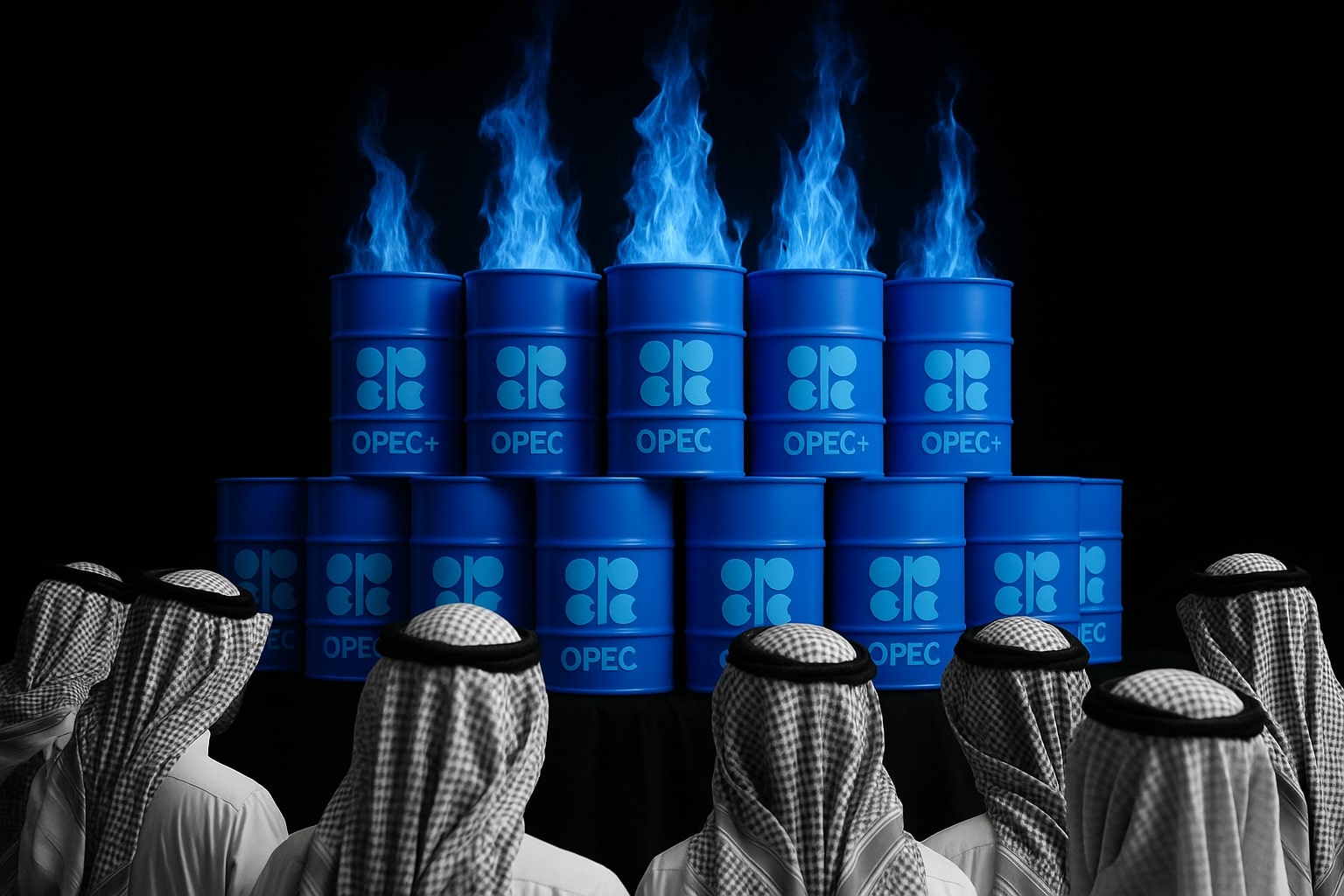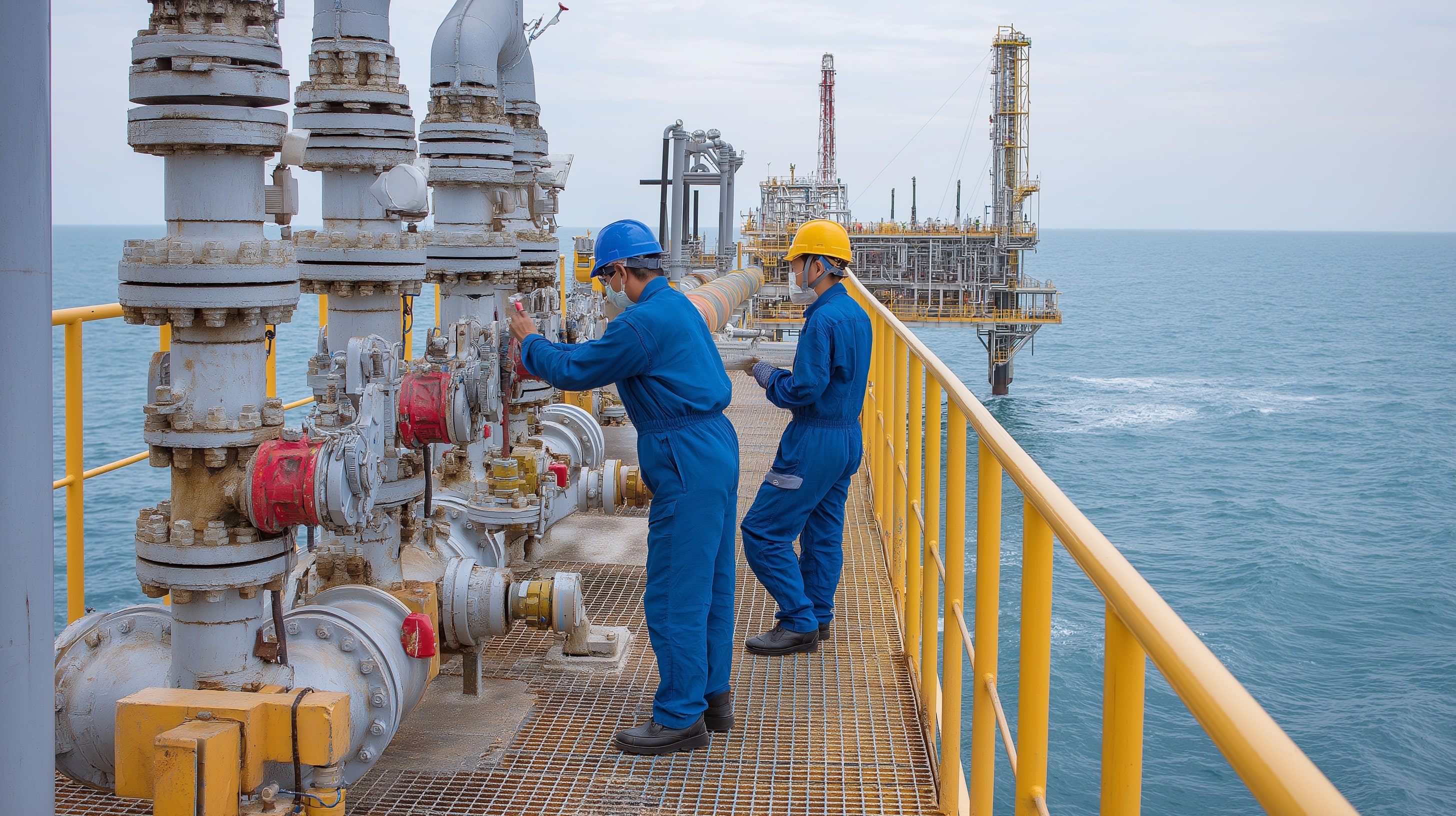
Natural Gas Price (NG=F) Prices Surge Toward $5.00 as U.S. Cold Snap and Rising LNG Exports Tighten Supply
With natural gas trading near $4.70/MMBtu, up 50% since October, traders are positioning for a breakout above $4.81 | That' TradingNEWS
Natural Gas Price (NG=F) Holds $4.70 Range as Winter Demand and U.S. Supply Shifts Collide Ahead of $5.00 Resistance
Natural gas (NG=F) prices have stabilized around $4.70 per MMBtu, consolidating in a tight band after a volatile week defined by cold-weather forecasts, storage fluctuations, and shifting global trade dynamics. Futures settled at $4.58 on Friday, marking a 50% gain since mid-October, and briefly tested $4.80 before closing higher than the 10-day moving average. The market is preparing for another breakout attempt toward $4.81–$4.95, a range that defines the upper limit of the current bullish cycle. The structure now reflects an equilibrium between U.S. heating demand and softening European benchmarks, both of which remain crucial to winter price trajectories.
Short-Term Strength Anchored by Weather and Domestic Demand
The near-term rally is being driven primarily by the onset of colder temperatures across the U.S. Midwest and Northeast. Forecast models from multiple energy agencies indicate sustained below-average temperatures through early December, reinforcing heating demand projections. Analysts estimate a 7% increase in U.S. residential gas consumption over the next two weeks, with daily draws from storage expected to exceed 90 billion cubic feet (bcf) by the end of the month. Residential and commercial customers will likely face a 4% rise in retail gas prices, while industrial users absorb as much as 21% higher input costs compared to 2024 levels.
The Energy Information Administration (EIA) reported that working gas stocks reached 2.44 trillion cubic feet, roughly 47 bcf below the five-year average, confirming a moderate deficit relative to seasonal norms. This structural tightness, combined with colder forecasts, continues to lend upside support to spot and futures contracts, keeping $4.51–$4.65 as the main defensive zone for bulls.
Technical Pattern: Hammer Reversal Confirms Bullish Continuation
The technical picture reinforces near-term bullish control. Natural gas prices have formed a two-day consolidation pattern inside the broader hammer candle from Wednesday’s breakout. Thursday and Friday both saw intraday dips below the 10-day average, but buyers quickly defended those levels, closing in the upper half of the session. The immediate support stands at $4.65, with a confirmed base above $4.51, corresponding to the rising 20-day EMA.
A decisive daily close above $4.81 will signal a continuation toward $4.88–$4.95, followed by measured extensions to $5.00 (127.2% Fibonacci) and $5.14 (161.8% extension). Momentum remains positive, and the structure implies further strength if $4.65–$4.67 holds. A close below the 20-day average ($4.51) would invalidate this sequence and shift the focus toward $4.23–$4.21, representing prior swing highs and the next potential accumulation zone.
Europe’s TTF Benchmarks and Global Risk Premium Compression
While the U.S. market remains bid, European natural gas prices have dropped to €30.31 per MWh, marking their lowest level in nearly two years. The decline reflects warmer temperature forecasts and diplomatic developments around the U.S.-backed Ukraine peace framework, which traders believe could lead to relaxed sanctions on Russian gas exports. The TTF contract had held near €32 for months before Friday’s 1.25% correction, driven by projections of milder December weather and reduced geopolitical risk.
This divergence between U.S. and European benchmarks has tightened the transatlantic arbitrage window, reducing short-term LNG export margins but improving overall supply balance for domestic U.S. consumption. LNG cargoes continue to flow at near-record levels, with the U.S. exporting 20% more LNG than last year, largely to Asia and southern Europe, which keeps total demand elevated despite European spot weakness.
Turkey’s Spot Market and Global Pipeline Flow Adjustments
In Türkiye’s spot market, 1,000 cubic meters of natural gas traded at ₺14,498.30, equivalent to $342 at the current ₺42.33/USD exchange rate. Friday’s total trade volume reached 225,000 cubic meters, representing a steep 71% decline from Wednesday’s ₺11.25 million turnover, underscoring lower regional demand ahead of winter storage utilization. However, the country still received 163.9 million cubic meters of pipeline gas that same day, indicating that long-term import flows from Russia and Azerbaijan remain stable. The contraction in spot liquidity is primarily linked to weather normalization and regional storage optimization rather than a fundamental shortage.
Production, Storage, and U.S. Supply Balances
Domestically, production continues to hover near record highs of 104 billion cubic feet per day, offsetting some of the bullish sentiment from demand-side drivers. The latest EIA report confirmed a 91 bcf storage build, marginally above the five-year average, although cumulative inventories remain slightly under 2024 levels. The U.S. Natural Gas Fund (NYSEARCA:UNG) closed at $20.70, down 1.7% following the storage report, reflecting minor profit-taking after a multi-week advance. Meanwhile, producers such as ExxonMobil (NYSE:XOM), EOG Resources (NYSE:EOG), and Chesapeake Energy (NYSE:CHK) recorded marginal daily losses ranging between 1% and 2.3%, suggesting traders anticipate a short-term pause before the next leg higher in prices.
Investor Positioning and Sectoral Sentiment
Institutional sentiment remains constructive toward natural gas producers. Analysts from leading investment firms expect gas prices to test $5.00 before year-end and potentially reach $5.40 in early 2026 if winter demand remains persistent. Equity exposure has been rising in upstream-focused names such as EQT and Expand Energy, which benefit from the wider margin spread between domestic extraction and international LNG prices. Hedge fund data show a 12% increase in net long positions across gas-linked futures since mid-October, signaling that speculative flows are aligning with the bullish physical narrative.
However, profit margins are likely to be capped by storage overhang risks and the return of associated gas from recovering oil fields, particularly in the Permian Basin, where gas output has surged 9% quarter-over-quarter.
Macro Correlations and Market Volatility
Natural gas continues to decouple from oil as a short-term investment theme. While WTI crude (CL=F) trades near $76.50 after an extended decline on rising supply, gas has sustained higher volatility and upward momentum. The spread between NG=F and CL=F now sits at a two-year high, reflecting divergent fundamentals: oversupply in oil versus weather-driven tightness in gas. The Dollar Index (DXY), steady near 100.22, provides limited cross-commodity pressure, and U.S. Treasury yields hovering around 3.91% continue to anchor energy-sector capital flows.
Volatility remains elevated, with implied one-month gas options volatility near 52%, indicating traders are still pricing wide winter scenarios. A breakout above $4.95 could trigger a short-covering rally toward $5.14–$5.25, levels not seen since late 2022.
Read More
-
PFFA ETF (NYSEARCA:PFFA) Holds $21.20 as 9.61% Yield Strengthens Its Position as a Top Income ETF
22.11.2025 · TradingNEWS ArchiveStocks
-
XRP ETFs Defy Crypto Sell-Off With $410M Inflows as XRP Falls to $1.93 Amid Whale Dump
22.11.2025 · TradingNEWS ArchiveCrypto
-
Oil Prices Forecast - Oil Prices Fall to $58.06 (WTI) and $62.56 (Brent)
22.11.2025 · TradingNEWS ArchiveCommodities
-
USD/JPY Price Forecast - Holds 156.38 as BoJ Silence and U.S. Yield Advantage Fuel Renewed Dollar Strength
22.11.2025 · TradingNEWS ArchiveForex
Regional and Geopolitical Risk Outlook
The geopolitical layer remains a wildcard. Progress in the U.S.-Ukraine peace negotiations in Switzerland could further ease global risk premiums, softening European gas benchmarks. Conversely, renewed cold outbreaks in northern Europe could reignite TTF demand and tighten U.S. LNG export capacity, drawing domestic inventories lower. Meanwhile, production discipline among major exporters like Qatar and Norway will be crucial in determining Q1 2026 pricing.
China’s steady recovery and India’s record LNG import growth add longer-term demand momentum. Asian LNG benchmarks are currently holding near $13.40/MMBtu, reinforcing the global floor for U.S. export parity.
Trading News Verdict — BUY (Bullish Bias Above $4.51, Target $5.14–$5.25)
The technical, fundamental, and seasonal alignments all point to sustained upside for natural gas (NG=F) as long as support near $4.51–$4.65 holds. The bullish structure remains intact, underpinned by colder weather, tight inventories, and steady export demand. A confirmed daily close above $4.81 opens the path toward $4.95, with measured extensions to $5.14–$5.25 representing realistic Q1 2026 targets.
The combination of limited downside risk, expanding industrial consumption, and disciplined supply suggests the market is transitioning into a controlled bullish cycle. For now, the verdict is BUY with a short-term target of $5.14 and mid-term projection of $5.25, provided macro conditions remain stable and U.S. inventories stay below seasonal averages
That's TradingNEWS



















